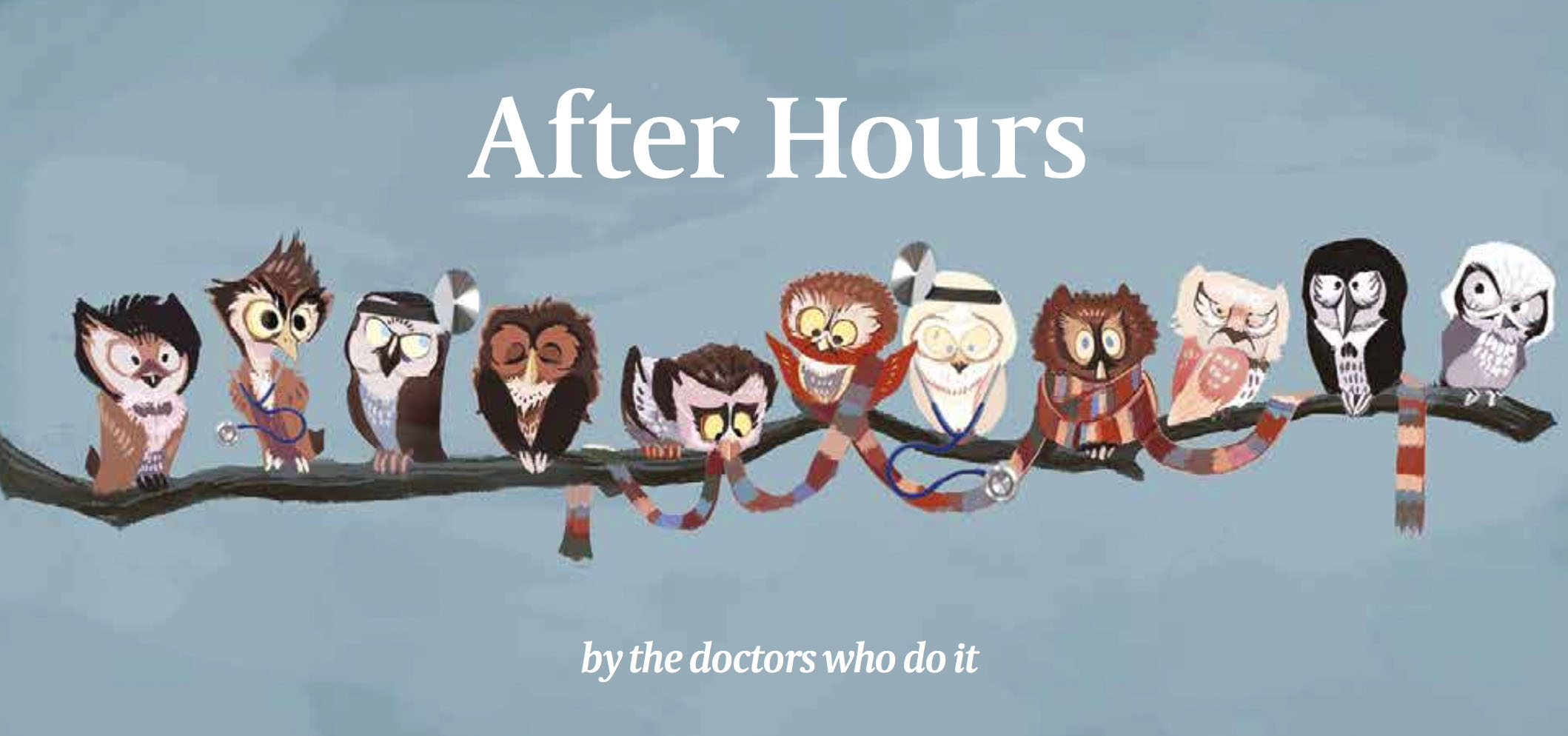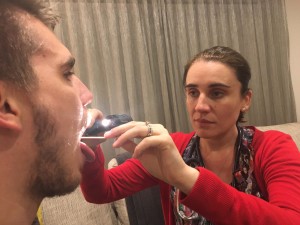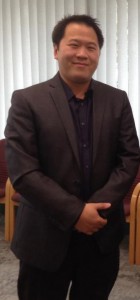Everyone seems to have a view on after hours companies of late but what’s it actually like to work for one? Reading the medical newspapers and GP only comment forums in the past few months, you’d be forgiven for thinking that after hours home doctor visits are something new. They aren’t. In fact, despite all […]
Everyone seems to have a view on after hours companies of late but what’s it actually like to work for one?
Reading the medical newspapers and GP only comment forums in the past few months, you’d be forgiven for thinking that after hours home doctor visits are something new. They aren’t. In fact, despite all the reports of high growth in the sector over the past couple of years and headlines in some of the daily metropolitan media suggesting that such growth might be leading to over servicing, the level of home visits by doctors in Australia is yet to return to a peak experienced in 1995. And although awareness of such services is growing today among the public, it remains relatively low at an average of about 30%.
There were a little over 2.3 million after hours home visits being performed nationally in 2015 but there are less than 2 visits per patient per year from after hours services.
The medical director of Australia’s largest after hours group National Home Doctor Service (NHDS), Dr Umberto Russo, describes a big gap between what he sees written sometimes about after hours services in newspapers and comment forums, and what he actually sees in the company he’s building and the doctors who work with him. NHDS doctors, he says, are passionate about their work and committed to the community.
Which does beg the question. What do doctors who actually do after hours work think of all the fuss?
We’ve heard a lot about after hours from the peak bodies and from parts of the primary care community in the comment columns of the various medical newspapers and GP only social media forums. But one voice that has been missing in most of the debate so far is that of the doctors who actually do after hours work.
Why do they do after hours work? How did they come to do it? What do they think about all the arguments currently being played out in the media?
Last week in The Medical Republic two comments appeared in response to an article written about suspect billing practices of some potentially rogue after hours operators as follows:
“Like herpes, the after hours home doctor service providers are here to stay….”
“When you leave a wallet full of money on the footpath…People are inclined to pick it up and put it in their pocket…”
What we wonder do the doctors who perform after hours work feel about comments like this?
Recently TMR was approached by NHDS to help them with their recruitment efforts for new doctors via an advertising campaign. NHDS, the largest national provider of such services is growing and needs more doctors. In addition, there is a degree of natural turnover in the work force.
NHDS are very particular about the types of doctors they are seeking. Their description was nothing like you’d expect from some of the press you see. They are looking for doctors from all walks and stages of a GP career – trainees, registrars and GP fellows. Surprising to us was that just on 30% of their doctors are GP fellows many of whom also work in day time practices. The remainder of the workforce tends to be split evenly between doctors who are GP registrars or who are enrolled in the Practice Eligible Pathway program to eventually become a GP. We suggested NHDS let some of their doctors tell their own story.
Dr Russo has worked in medical deputising for over 25 years. He believes the creation of a national after hours service, built on traditional deputising support for general practice but scaled using modern technology and business practices, has been instrumental in helping deliver government policy goals of much better access to after hours primary health care. He argues that groups like NHDS perform an important service to primary care, not only in supporting day time practices, as they have for the past 41 years, but also in providing doctors at various stages of their careers with an different learning dimension to their working lives and, at times, much needed additional income.
This article doesn’t delve too deeply into the arguments around whether after hours will or does actually reduce ED presentations, as has been argued, thus saving the healthcare system vast sums of money. These are complex arguments, the data isn’t all in we suspect and we’re guessing you see enough of such material weekly in the pages and comment forums of all the medical newspapers and ‘GP only’ social media havens.
Most of those who comment on GP forums (for and against after hours) haven’t actually worked for any these new after hours groups and have little first hand experience of how they operate.
In this article, doctors who work for NHDS give their own accounts of their work and what they think of the recent controversies over after hours.
NHDS provided access to a typical cross section of the types of doctors that work for them to talk to. They provided no briefing to those interviewed and had no say in the comments made by their staff after they made them. And they didn’t direct in any way in what was asked.
Here are their stories:
Name: Dr Natalie Caristo
Status: GP Fellow in practice, MBBS BSc FRACGP since 2014, 36 weeks pregnant
History:
• UNSW graduate 2009
• Worked in the hospital system for three years
• Now works in suburban general practice in Sydney
• Started with NHDS immediately on becoming a Fellow
Dr Caristo says she’s one of those people who likes to explore the edges and fill her day up. Although she was already working close to full-time in a suburban practice, she decided to try after hours, partly for a bit of extra money, but mainly because she was simply interested in finding out why it was like.
Before starting, she asked a few colleagues and nearly all of them replied, “Why would you want to do that? ‘You’ve got enough on your plate”.
“I got quite a bit of conflicting information from different people at the time”, says Dr Caristo.
“From a medical perspective, people were saying you’re in the home without history and no access to resources, so I thought at first I might be putting myself into a vulnerable situation.”
But Dr Caristo loved the work almost immediately. “A lot of what I heard about
after hours turned out to be perceptions and assumption, I think. There are things
to get used to. I was really surprised at the thoroughness of the induction process for instance. I really thought I could just put on my stethoscope and hit the road.”
“When I look back, I’m glad for all the pre-work, training and support. There is a benchmark
we all work to… the same protocols, the same equipment. You need that in a service like this.”
Dr Caristo loves the work for the variety – she says she sees a lot of category 4 and 5 type patients – but what she most loves is seeing patients in their homes and being part of the community.
“The patients and families are just so appreciative. When you step into these homes and reassure parents or aged care givers and give them clear guidelines about when to go to emergency or not, they feel so much more empowered.”
“I get a kick out of helping people in these situations because they do have a genuine need. We help families in really difficult situations. And they are so appreciative of what you do. It’s almost addictive.”
Of the controversy over after hours services, Dr Caristo says she can see a disconnect between what people think happens, and what actually happens.
“There is a stereotype that a lot of these patients are lazy and they aren’t that sick. You can pull out a discharge note and say ‘oh, only an upper respiratory tract infection, how urgent was that’? The reality is the diagnosis might not be seen as urgent when you look at the words, but if you walked into that parent’s home and saw that anxious mother, and spent 15 minutes counselling her about the difference between pneumonia and upper respiratory tract infection, and what to look for such as managing fluids, you’d think differently about what actually went on in such a call.”
And then there are the calls where she has saved a life.
“In one case when I got there a child was semi- conscious with an oxygen level of 85%. I called the ambulance immediately and spent the next seven minutes puffing Ventolin into the child thinking please wake up.”
In this case, Dr Caristo said the parents were not to blame. The circumstances unfolded too fast for them to understand the nature of what was going on.
As a pregnant mum, Dr Caristo says that she is even more aware of the situation of many families she visits.
“There’s a rational part of your brain where you have medical knowledge and are a doctor, and then there is just you being a mum and a dad who are really worried about something. If you go onto one of the Facebook groups for mums who are doctors, you can see that the non medical side kicks in occasionally.”
“People carry on about over-billing in after after hours but anyone of us can over service in our day jobs if we like. I don’t see the difference. It’s our call. Some GPs do care plans when they aren’t needed. It comes down to the individual doctor.”
At NHDS every patient is given a link to provide feedback and all negative feedback is dealt with via a review that involves one of the Medical Directors, the doctor on call and the patient.
“There is pretty good clinical governance at this group,” says Dr Caristo.
STORY NO 2. THE MIDDLE GROUND BETWEEN ED AND GENERAL PRACTICE
Name: Dr Jonny Levy
Age: 40
Current Status: GP Fellow , MBBS BSc FRACGP, FARGP
Daytime: Practice in skin cancer
After Hours: Used to do lots of shifts. He has no time these days but helps as an MD
Status: Contracts to NHDS as a medical director History:
- Qualified as a doctor and worked in the UK for four years mainly in A&E
- Migrated to Australia in 2005 with his wife and eldest son
- Spent six years working in ED in Australia
- Decided he needed a change of lifestyle so did his fellowship and settled as a GP and now has four kids (ponders whether staying in ED would have been an effective contraceptive)
Dr Levy started his interview by asking to go off the record so he could explain how frustrated he was at the whole after hours debate. He is keen to point out that NHDS, which as the largest and fastest growing national after hours group is actually 41 years old.
He’s proud of the service that after hours provides, and seems open and responsive to fair criticism by colleagues and patients. But he suspects that what really goes on in after hours groups is getting lost in translation.
“It just feels a lot like a vocal minority, the same people with the same arguments. It’s very frustrating if you’re doing the work and people are commentating from the outside without actual first-hand knowledge,” he says.
“You have to do it to understand it.”
Dr Levy says he transitioned reasonably quickly from the higher adrenalin ED environment to a suburban GP practice. He says he loves being a GP, but not long into his GP training found himself restless.
“I guess there was a gap of excitement and the lure of the unknown that I missed from ED work”.
After talking this through with one of the original owners at MMLS (now NHDS), he decided to give after hours a try.
The caseload was hugely varied.“Our remit is urgent, not emergent, but we do see unanticipated emergencies on occasion – which we manage appropriately. After hours fills an important gap between urgent care and emergent care. A midway point between ED and GPs.”
Regarding the controversy over billing urgent versus non urgent items, Dr Levy says “Patients often don’t know whether something is truly urgent or routine. And we don’t until we get there either. We try hard to safely triage, but – as worldwide telephone-based triage has repeatedly found – it often needs a physical examination to determine whether something is routine, urgent or an outright emergency.”
“I’m a taxpayer. I don’t want money wasted. Saying it’s ‘big business gaming the system’ isn’t right.”
“Quality wins out in the end,” he says. “If we provide a good enough service we will survive and thrive and I’m sure a service like ours will. It fills a need and it does it well.”
STORY NO 3. THE FLEXIBILITY TO LEARN AND STUDY
Name: Dr Vishu Konda
Status: Doctor on Practice Eligible Pathway Daytime: Registrar training in GP practice
Night-time: Up to four shifts after hours per week
History:
- Trained and qualified in India
- Emigrated to Australia 13 years ago
- Worked in the public system for 12 yearsin hospitals in multiple clinical areas
- Decided to join the GP training program
- Pays for study and living mostly via afterhours work
After emigrating from India, Dr Konda
Dr Vishu Konda spent 12 years working in the public hospital system before deciding he wanted to live in the city and become a GP. He moved to Brisbane to start his GP training and dropped income as a result.
“I love it. It’s so flexible and it suited my lifestyle perfectly. It’s a good experience as I’m going to be a GP anyway, it leaves me free to study and prepare for exams during the daytime and it’s well paid,” he says.
Dr Konda moved from Brisbane to Townsville to work in a GP practice as a registrar and continues to study for his Fellowship exams. Although he now works in a practice by day, he still does some after hours shifts as he likes the to keep busy.
“I still have a fair bit of free time, I’m a bit of night time person anyway, I’m exercising my brain and earning a bit more. It suits me,” he says.
Asked if there was anything he didn’t like about the after hours work, Dr Konda couldn’t really think of anything.
“You do see a lot of different types.
“Some at first can be a bit confronting, but what is nice is that you soon realise they are all really pleased to see you. The reality is you are there to help them and they know that.”
STORY NO.4 DIVERSITY AND REWARD
Name: Dr Jomini Cheong
Age: 34
Status: GP registrar with Eastern VictoriaGP Training
History:
•Graduated from University of Melbourne (MBBS) in 2010
•GraduatedfromMonashUniversity(BPHARM/ BCOM) separately in 2002 and 2004
• President of GP Registrars Australia (GPRA)
Dr Cheong has the immediate feel of someone who one day might be the head of the RACGP or AMA. He’s a graduate of Melbourne University and training now for his fellowship, but in his spare time he is president of the General Practice Registrars Association (GPRA), an organisation of around 25,000 members. He’s got a lot on his plate. But he exudes enthusiasm for everything he does.
He became interested in after hours doctoring after it was recommended by another registrar and his wife working at the same practice who said they enjoyed the work and thought he might as well.
“It’s not everyones cup of tea I’m sure, but some people enjoy doing after hours home visits”, he says.
“There are risks doing work in the clinic, and different risks doing work in the home. It (the work) can be surprising sometimes. This is one of the more rewarding aspects of the job. The demographic between the patients you see in the clinic during the day and those you see after hours is usually quite different too, which adds to the diversity of your experience.”
As a registrar, Dr Cheong isn’t averse to the additional income either.
“Rates of pay vary considerably in your GP training phase. Compared to the GPRA benchmarks, doing this work is a great way to earn extra income while you train. They (NHDS) are very flexible in how you work.”
Dr Cheong says that in the debate over after hours, not a lot is said about the great learning opportunity it presents.
“People look at it cynically and say it’s just a business money-making operation. But there are many aspects to the service that are potentially beneficial for doctors. In particular, there is a lot of potential for doctors to learn as there are so many different types of presentations you see. It’s also great for additional income and very flexible so doctors can fit it into their schedules without much trouble.”
This article was paid for by National Home Doctor Service and developed by TMR.
If you are interested in joining the NHDS team you can contact their National Recruitment Team at recruitment@homedoctor.com.au, call 1300 643 737 or CLICK HERE.






